
Art | Resources
Desk Mat
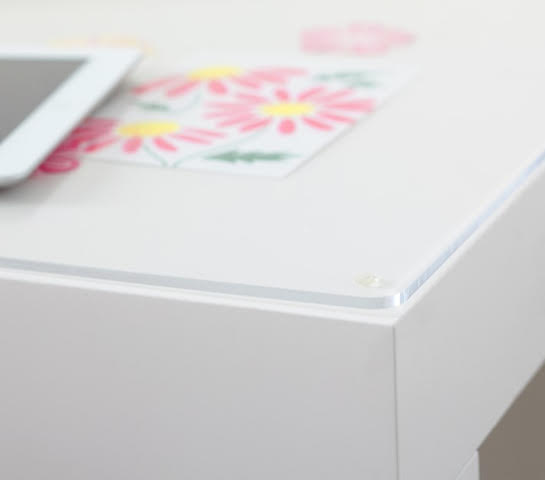
This desk mat from Pottery Barn is made of acrylic plastic.
Question from Jackie
Hi Debra,
Hello, I am so tempted to buy this Large Desk Mat from Pottery Barn . I know I shouldn’t because it is made of acrylic. Would you happen to know of something better? Leather is pricey and this is for my 7 year old son who has ADHD symptoms.
Thank you.
Debra’s Answer
This is easy.
Just get a piece of glass to put on the desk top.
Tell them at the glass store what you are using it for and the size of the desk and they will give you the right type of glass and cut it for you.
Does Odorox Technology Remove Fragrances in Homes and Cars?
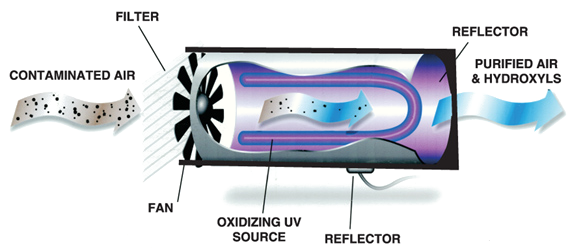
Odorox uses elements found in nature to break down fragrance and other odors in indoor air.
Back in 2011, a reader asked about Odorox, a new technology that claimed to completely remove fragrance from fabrics, surface, beds, curtains, upholstery, and other materials that are difficult to remove fragrance from.
I didn’t have any experience with it, but I posted her question and asked if anyone had any experience, and got zero responses.
Today I got a consulting call about Odorox. Same situation. A woman moved into an apartment and everything is scented and she can’t get the fragrance out.
She wants to know…does it work?
Does anyone have any experience with this service?
Odorox is a “hydroxyl generator” that uses hydroxyl molecules to break down the chemical bonds to destroy odor molecules.
I would have to do more research to offer any comment on this, but I didn’t want to wait to ask if anyone has any experience using it. Does it work?
Thank you! Just leave a comment with your reply.
New Legislation Aims to End Product Labeling and Right-to-Know for Toxics
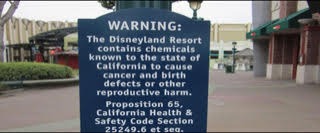
I just learned this morning that on June 6, 2018, Sen. Jerry Moran (R-KS) and Reps. Adam Kinzinger (R-IL) and Kurt Schrader (D-OR) introduced S. 3019/H.R. 6022, the inaccurately labeled “Accurate Labels Act.”
The bill is designed to comprehensively preempt the ability of states and municipalities to require the disclosure of ingredients in consumer products that communicates the presence of harmful chemicals, such as carcinogens or reproductive toxins.
The bill would likely overturn numerous state and local laws (and potentially some federal programs) including mercury warning labels, cleaning product ingredient disclosure, disclosure of toxic flame retardants in furniture, disclosure of dangerous chemicals in children’s products, and California’s Safe Drinking Water and Toxic Enforcement Act (Prop 65).
In a press release regarding this legislation, Women’s Voices for the Earth provided some good statistics about the need for ingredient transparency:
- A 2015 survey of 1,000 U.S. moms found that 73% of those surveyed, “often do research to understand the safety of ingredients to which their family is exposed.”[i]
- In a 2013 survey consumers reported ingredient transparency as a “very important” or “important” factor in purchase decisions like food and beverage (82%), beauty and personal care (82%), and household products (82%) [ii]
- A 2012 survey of consumer attitudes found that 86% of people polled believed “ingredient transparency “ is one of the most important issues for companies to address.[iii]
- A 2015 Harris poll found that 60% of women in the United States report that they read labels on personal care products and avoid products that contain certain chemicals. [iv]
While I personally feel that Proposition 65 is too vague and confusing to be an effective warning, I do think we should have the freedom to have good warnings and the right to know. And we should have MORE information about toxics in products, not less.
If you want to take action to stop this legislation, now is the time.
State Labeling/Warning Preemption Bill Summary
WOMEN’S VOICES FOR THE EARTH: Stop the Chemical Industry from Undermining Your Right to Know
[i]Influence Central (2015) It’s Not Easy Being Green: Navigating the Kaleidoscope of Green Moms. Available online: http://influence-central.com/ic/wp-content/uploads/2015/04/IC_NavigatingKaleidoscopeofGreenMoms.pdf
[ii]http://www.globescan.com
[iii]http://www.theregenerationroadmap.com/files/reports/TRR_Rethinking_Consumption.pdf
[iv]https://cdn.shopify.com/s/files/1/1817/5539/files/Kari_Gran_Green_Beauty_Barometer_Results_2016.pdf
Safe Hotels for MCS

Question from Milena
Hi Debra,
Glad to find this website. I recently got married to a man who suffers from MCS in a very severe way. We want to travel, to any place in the world, to have some vacations. Do you know any hotels we could be using, anywhere?
Thank you!!!
Debra’s Answer
There used to be a directory of hotels for MCS that I believe no longer exists.
Here are some posts where I’ve already written on the subject:
FINDING HOTELS THAT ARE NON-TOXIC
LEEDS CERTIFIED NAPA VALLEY HOTEL
FILTERED WATER WHILE TRAVELING
HOUSTON PLACE TO STAY ? SAFE? SAFER?
Hotels continue to be a toxic industry. I stay in B&Bs when I can.
Readers, if you have stayed someplace you consider safe, please put it in the comments.
Here’s a place in Berkeley, California that especially caters to MCS: The North Berkeley Hils Homestay.
Which Of These Unscented Dish Soaps Would You Use?
Question from Sicili
Hi Debra,
I was wondering if you could please tell me which one of the three dishliquids you would use if you were choosing between , Better Life unscented, Attitude fragrance free and Seventh Generation free and clear? Thank you so much for your time. I hope you have a nice day 🙂
https://www.cleanhappens.com/products/dish-it-out?variant=14099968516
https://www.attitudeliving.com/baby-dishwashing-liquid-fragrance-free-p/13179.htm
https://www.seventhgeneration.com/free-and-clear/dish-detergent
Debra’s Answer
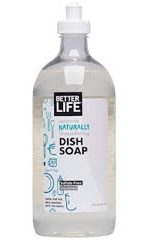 Better Life Unscented
Better Life Unscented
100% plant-derived cleaning agents
From coconut and corn
No SLS (sodium lauryl sulfates), SLES, ethoxylates, petroleum solvents, synthetic fragrances, dyes, parabens, or triclosan. No harsh chemical residue. Just the good stuff.
Other Ingredients
Purified water, potassium cocoate (natural castile soap), lauryl glucoside (plant derived), caprylyl/capryl glucoside (plant derived) glycerin (vegetable), disodium coco-glucoside citrate, aloe barbadensis leaf extract, tocopherol (vitamin E)
Non-toxic and biodegradable
Safe around kids, pets, and the planet
Never tested on animals
Kind to waterways and marine life
Made in the USA with solar energy
Better Life is a privately-owned company.
Better Life Unscented Dish Soap on online.
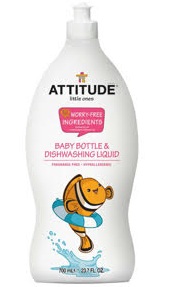 Attitude Baby Dishwashing Liquid
Attitude Baby Dishwashing Liquid
We promise to use only the safest and purest ingredients.
Aqua/water/eau, coco glucoside, myristyl glucoside, lauryl glucoside, sodium chloride, sodium gluconate, sodium citrate.
ADVANTAGES
- Free of carcinogen ingredients and by products (IARC group 1 & 2)
- Free of 1,4-dioxane and ethylene oxide, tested by independent laboratory
- Certified eco-friendly by EcoLogo, the most recognized certification in North America
- CO2 neutral: no contribution to climate change
- Fragrance free
- Hypoallergenic
- Vegetable-based and biodegradable (OECD 301)
- Free of EDTA and NTA
- Not tested on animals
- Vegan product
- Septic tank safe
- Made in Canada
- I can find who owns Attitude or anything about them
- .
Attitude Baby Dishwashing Liquid at online.
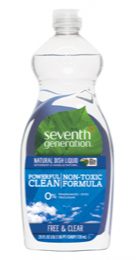 Seventh Generation Natural Dish Liquid
Seventh Generation Natural Dish Liquid
Though this Seventh Generation product is plant-based and free from fragrances and dyes, the company is now owned by Lever, so I have less trust about the integrity of the product. Lever is not dedicated to making toxic-free products. So I wouldn’t use this one for that reason, especially since there are other choices available.
* * * * *
Either of the first two would be fine with me. The Attitude product is simpler and has fewer ingredients, the Better Life product has the added benefit of aloe and vitamin D, but otherwise their ingredients are very similar and they are both plant-based and fragrance-free. If I had to choose one, I’d go with Better Life, because they are more transparent about who they are and they are clearly motivated by purity of product. And I like that they use solar energy. I work in a solar-powered office. 🙂
Mercury in Orthotics
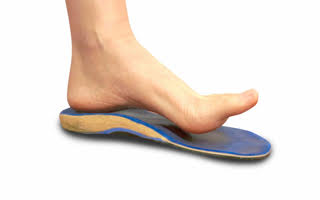
Question from Cindy
Hi Debra,
I have been wearing orthotics in my shoes for the past 5 years. Recently, I found out that the owner of the company could no longer provide his orthotics, because the rubber in the middle layer of this product contains mercury, and has been banned. I have been able to walk pain-free in these orthotics, so am dismayed, but I am also concerned if the mercury is capable of leaching out into my foot. I wear these everyday, all day. Am I in danger of mercury poisoning?
Thank you so much.
Debra’s Answer
First of all, I went searching online, but couldn’t find any reference to mercury in orthotics. FYI here’s a list of materials used to make orthotics. Mercury isn’t included. This doesn’t mean YOUR orthotics do not contain mercury, it just isn’t common.
And you mentioned it was in the middle layer. So you would have had no skin contact. The mercury would have had to have been outgassing for you to be exposed, in which case you would have inhaled it.
There are many types of mercury, from the elemental particle to oxidized vapor, and each will enter your body and move through it in different ways, with different effects.
I doubt this mercury has had any effect on your health, but if they have banned it, there is a reason.
I would suggest you go back to them and ask what form of mercury was used and why it was banned.
Then you could go online and look for the toxicokinetics for that type of mercury.
You can look up this kind of information for any chemical by searching for “toxicokinetics” name of chemical”.
Toxicokinetics is a description of the routes by which a chemical enters the body, the rate of entry, and what occurs to metabolize and excrete the chemical once it is in the body.
As long as you know the exact chemical in the exposure, you should be able to find it’s toxicokinetics.
A Tale of Three Bagels
 Enriched wheat flour [flour, malted barley flour, reduced iron, niacin, thiamin mononitrate (vitamin b1), riboflavin (vitamin b2), folic acid], water, sugar, yeast, dehydrated onion, wheat bran, cornmeal, salt, wheat gluten, preservatives (calcium propionate, sorbic acid), grain vinegar, rice flour, monocalcium phosphate, cornstarch, mono- and diglycerides, polysorbate 60, soy lecithin, potassium iodate, onions.
Enriched wheat flour [flour, malted barley flour, reduced iron, niacin, thiamin mononitrate (vitamin b1), riboflavin (vitamin b2), folic acid], water, sugar, yeast, dehydrated onion, wheat bran, cornmeal, salt, wheat gluten, preservatives (calcium propionate, sorbic acid), grain vinegar, rice flour, monocalcium phosphate, cornstarch, mono- and diglycerides, polysorbate 60, soy lecithin, potassium iodate, onions.
And there it was: soy lecithin. It’s an ingredient you’ll find in a lot of chocolate bars, but I didn’t expect it in a bagel. I guessed the other ingredients were probably there, but this was an unusual circumstance. I thought I could eat a little Sara Lee bagel and get away with it. But I couldn’t.
This onion bagel was the joy of Larry’s day so I wanted to find a better bagel.
First I went to a local bagel shop. They didn’t have their ingredients posted, so I asked. I was told they didn’t know the ingredients. They just bake the bagels. Apparently it all comes in a mix or something, they aren’t actually mixing ingredients at this location. I’m not sure this is legal to not have the ingredients available for a food item, but that is not the issue here. We couldn’t find out the ingredients to see if the bagels contained fat or not. When we asked this specifically we were told, “We don’t know so don’t buy the bagel.” Talk about difficulty getting a list of materials used to make a product…
Then we went to a local independent grocery where we often shop. They had bagels in bulk bins that we could buy individually, but no ingredients. But there was an attendant at the bakery counter. We asked her and she said “These are authentic New York bagels. They only contain flour, water, yeast and salt.” And she picked up the phone and called the bagel maker to confirm.
We bought those authentic New York style bagels and loved them, The Sara Lee bagels didn’t even taste like bagel and were more like bread than bagels.
Now, you are probably asking why I didn’t buy organic bagels. Well, I tried. The first place I looked was my local organic food store. But they didn’t have any. We used to buy bagels at the farmer’s market made from organic hand-ground whole wheat flour and they were out-of-this-world delicious. But they are no longer being made.
So for the moment our best choice is fat-free, additive-free bagels. But they are a tiny part of our whole food intake, which revolves around whole organic foods, more than half purchased at the farmer’s market.
I’m telling you this story just because I mostly live in the world of natural food store and farmer’s market. It was actually shocking to me to look back at industrial food and experience what it is made from, how it tastes and what it does to my body, and to see how difficult it was to get the ingredients of food products.
Just a little slice of life to show the range of choices.
Now that I’ve had my bagel digression, I’ve decided I’d rather eat my whole organic food. The day after I wrote this I bought a loaf of hand-ground whole grain organic bread made from heirloom Italian grain. Oh so much better!
Linen Sheets + Making the Bed

Rough Linen is having a sale on many items right now.
As you may know, Larry and I moved across the country from Florida last September. Last week we accomplished the momentous milestone of moving to a storage unit half the size, so I thought I’d celebrate by looking for my linen sheets.
Turned out they were in a bag I had brought into the house and stuffed in the closet months ago, but I was happy to find them.
I had one white linen sheet I had inherited from my great aunt, one white linen pillowcase I had received as a gift from Life Giving Linen and one natural linen duvet cover I had purchased at Macy’s last year on sale. At the time I had thought we would be doing a lot of traveling, so I bought a king size duvet cover with the idea that we could put it on top of any hotel bed and sleep between linen sheets. We haven’t yet done that, but we did try to use it as a duvet cover on our queen wool comforter and that didn’t work very well.
Meanwhile I had been looking at buying this Sheet Set from Rough Linen that is currently on sale. The description explained that it had two flat sheets to save money. It occurred to me that also made sense because my problem with sheet sets has been that the bottom fitted sheet wears out much faster than the top sheet and pillow cases, and with two flat sheets I could alternate which one is on the bottom and the sheets would last longer. In fact I think the two sheets should be numbered or have some indentification symbol on them so you can alternate them easily. Of course, we would all need to learn to make mitered corners, but it’s not difficult.
But before I could get to mitered corners, it was late and there were no sheets on the bed, so we just laid the linen duvet cover on top of the mattress and used the comforter with the cotton flannel cover that fit and I used the white linen pillowcase and it worked perfectly! My body so loved laying on that linen again! I could feel my body releasing tension. And then the flannel cover was cozy and warm. Just perfect, perfect perfect. Just laying the sheet over the mattress is working very well. No corners to fold and it actually stays in place better than the fitted sheet.
I highly recommend that you consider linen sheets if you can afford them. They are worth saving up for and will last longer than cotton,, especially if you alternate two flat sheets as I described above.
As it turned out I didn’t buy the sheet set because I was happy with the combination of the bits and pieces I already had. But one day I will buy a set of linen sheets and sleep happily ever after.
UPF/UV Coating on Clothing
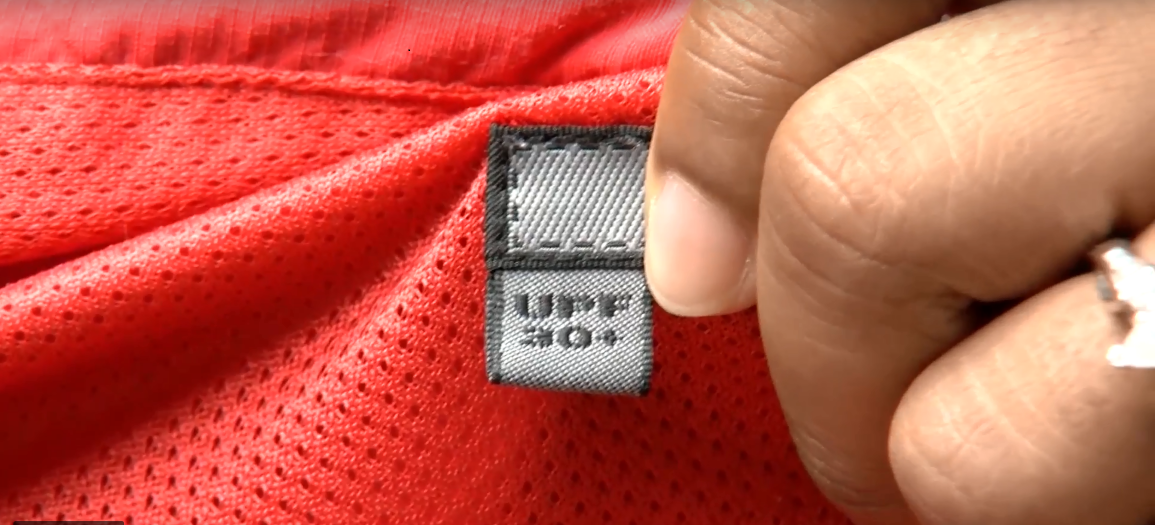
Question from Dean
Hi Debra,
Are you aware of any health dangers posed by UPF/UV treatments on clothing?
Thanks!
Debra’s Answer
First let me explain what this is.
You’ve probably heard of SPF with regard to sunscreen. That stands for Sun Protection Factor and measures the amount of time it takes for skin exposed to the sun to redden.
UPF is a similar measurement for fabric, which indicates the amount of UV radiation that penetrates a fabric and reaches the skin. To learn more about the UPF rating system and choosing UPF clothing, see this excellent article from REI: How to Choose Sun Protection (UPF) Clothing.
Now to answer your question.
Sun protection fabrics are generally made from synthetic fibers. Those that have chemical additives don’t seem to be disclosing what those chemicals are. The only UPF additive I could find was nanoparticles of titanium dioxide.
I generally don’t recommend synthetic fibers and don’t recommend chemicals that do not disclose what they are.
There are many guidelines that explain how to choose clothing that offers some protection without wearing synthetics or unknown chemicals. Any dark, tightly woven natural fiber will offer protection.
Here’s an article with more information: SUN & SKIN NEWS: Dress to Protect: 5 Things that affect How Well Your Clothes Block UV Rays
Polyester-free Umbrella
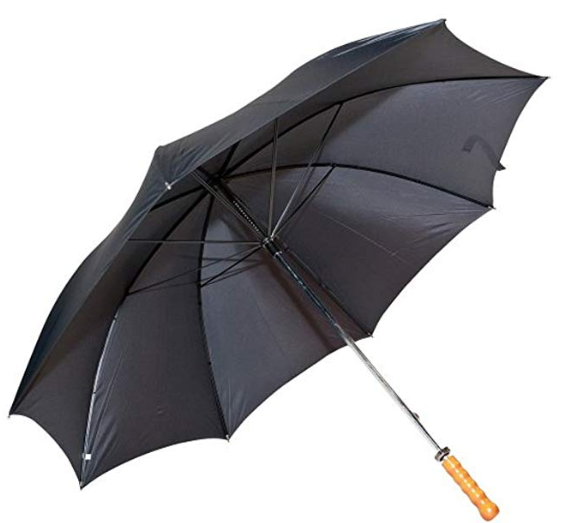
Black Oversized Nylon Umbrella from online
Question from Sue in TX
Hi Debra,
I am allergic to polyester. I used to be able to buy nylon umbrellas from Totes, but they switched to 100% polyester (at least I have not been able to find an existing Totes umbrella, at this time, that is not 100% polyester). I have searched online, for any brand, and I cannot find a nylon umbrella. Thank you for any help!
Debra’s Answer
I had no problem finding nylon umbrellas. Here’s a whole page of nylon umbrellas at amazon.com.
But while I was looking I found an interesting article about the construction of umbrellas at QUORA: Why are umbrellas made of nylon? Isn’t there a more waterproof material that could be used?
Umbrellas may disclose the basic material they are made from, but often don’t tell you they are waterproof because they are coated with Teflon or “most often” a polyurethane film.
Apparently the most common material now for umbrellas is Pongee, which is usually silk, but can be a synthetic material by the same name.
In purchasing an umbrella, try to find out if waterproofing chemicals or films have been added.






